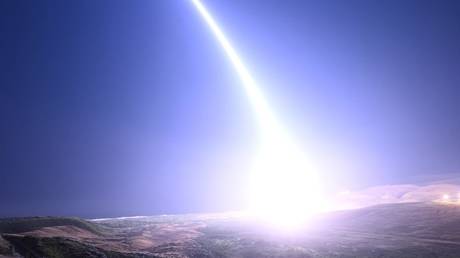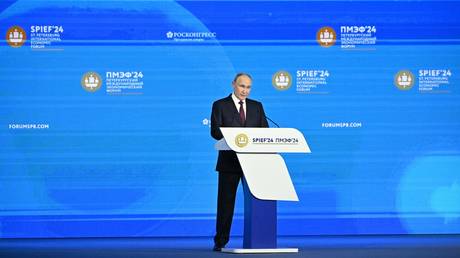ARTICLE AD BOX
Washington has threatened Moscow and Beijing with an arms race if they “refuse to engage”
Washington is considering increasing the number of its atomic warheads in the coming years, given the international situation, a senior official on the National Security Council has said.
Pranay Vaddi is the senior director for arms control, disarmament, and nonproliferation at the NSC. He gave the keynote address at the Arms Control Association’s annual meeting on Friday.
“We may reach a point in the coming years where an increase from current deployed numbers is required,” said Vaddi, according to Reuters. “We need to be fully prepared to execute if the president makes that decision.”
“If that day comes, it will result in a determination that more nuclear weapons are required to deter our adversaries and protect the American people and our allies and partners,” he added.
Some of the planning is being made in the expectation that US President Joe Biden will win a second term in office this November.
Read more US tests nuclear missiles
US tests nuclear missiles
The size of the US nuclear arsenal is currently limited by the New START treaty, negotiated with Russia in 2010. It is presently set to expire in 2026, with no indications that it might be renewed.
Last year, Russia formally suspended its participation in New START, citing US sanctions over the Ukraine conflict and encouragement of Kiev’s attacks on Russian strategic air bases. Moscow has continued to observe the treaty’s provisions capping the number of nuclear weapons and delivery systems, however.
Meanwhile, China has shown no interest in negotiating a nuclear treaty with the US.
Vaddi’s speculation about a possible expansion of the American atomic arsenal was teased in the Washington press ahead of time as a possible change to nuclear policy.
The US has already announced plans to update its ‘nuclear triad’, from strategic bombers and ballistic missile submarines to new gravity bombs and silo-based missiles. All of the projects are currently in development, but appear to be over budget and behind schedule.
Read more Russia ‘not even thinking’ of using nuclear weapons – Putin
Russia ‘not even thinking’ of using nuclear weapons – Putin
The B-21 Raider strategic bomber had its first flight last November and is not expected to start replacing the current bomber fleet before 2027. The first of the Columbia-class ballistic missile submarines is currently under construction and scheduled to enter service by 2031.
The primary thermonuclear gravity bomb, the B61, was designed in the 1960s. The Pentagon has signaled plans to develop new variants, but it remains unclear whether Congress has approved funding for the project.
The Sentinel intercontinental ballistic missile (ICBM) project is scheduled for its first flight in 2026, leaving the US Strategic Command struggling to extend the life of its Minuteman III missiles, which first entered service in the 1970s.
.png)
 5 months ago
8
5 months ago
8








 English (US)
English (US)